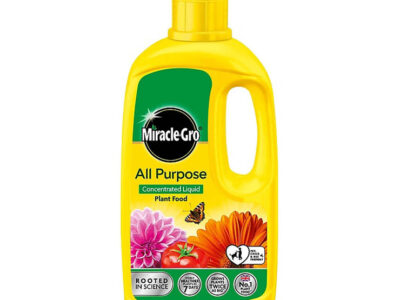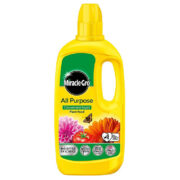
Did you know that around 18 Million Americans participate in martial arts at least once a year? There’s been a significant surge in martial arts engagements across all ages in the United States. Martial arts have become a perfect way for people to acquire physical fitness, mental discipline, and self-defense skills. However, along this path, many practitioners face a common challenge: bruised knuckles.
Experienced martial artists understand the significance of maintaining fitness and avoiding injuries that could impede their training sessions.
Therefore, we will explore ten tips that will help them safeguard their knuckles from bruising and maintain optimal hand health during martial arts training for adults.
Tips to Avoid Bruised Knuckles During Martial Arts Training for Adults
1. Glove Selection
Gloves are the first line of defense that will protect your hand from bruises. So, ensure that your gloves have an optimal fit, neither too snug nor loose, and are crafted from durable leather or quality synthetic materials.
Moreover, they should have substantial knuckle-layered foam or gel padding that offers optimal protection, absorbing impact and minimizing the risk of bruising during rigorous training sessions.
2. Understanding Fist Formation
Martial arts training for adults involves many activities, such as Jiu-jitsu and Taekwondo, that require mastering fist formation. Usually, knuckles are hurt when one does not have proper fist formation; thus, the hit’s impact is not evenly distributed.
The key here is to tightly curl fingers and position the thumb atop the first two knuckles so that the impact and strain disperse evenly.
3. Gradual Progression
If you have started your training with high-intensity activities, you will eventually strain your knuckles because your hand is not used to handling pressure. Therefore, if you are a beginner, it is important to gradually amplify your training intensity to allow your hands to understand the impact.
For instance, in Muay Thai, beginners start with lighter bag work, progressively advancing to heavier bags, allowing gradual adaptation.
4. Hand Wrapping
This technique involves using long, elastic wraps covering the entire hand, wrist, and sometimes even the forearm.
People doing martial arts training for adults should use this to provide comprehensive support, stability, and protection for the entire hand, including the knuckles, fingers, and wrist. Hand wraps are versatile and great for reducing impact, stabilizing joints, and preventing injuries like sprains and fractures.
5. Hand Strengthening Exercises
To boost the strength of your hand muscles and bones, use grip strengtheners, such as stress balls or spring-loaded devices, and finger extension exercises like rubber bands for resistance.
Such exercises aid in enhancing hand resilience, which is crucial in disciplines like Brazilian Jiu-Jitsu, where grip strength is vital for maneuvering opponents. Imagine a rubber band in this way: when cold, it’s stiff and prone to snapping; when warmed up, it becomes flexible and resilient.
Similarly, these workouts promote better blood circulation and greater hand flexibility, which aids in quicker recovery from minor impacts and reduces the chances of bruising.
6. Varied Training Surfaces
Training on diverse surfaces is a progressive strategy for hand conditioning. Start with softer surfaces like pads or focus mitts, similar to practicing strokes on a canvas in painting, allowing you to refine your techniques without excessive strain.
Gradually shift to harder surfaces such as heavy bags or wooden dummies as your skills develop. This transition will toughen your hands gradually. This technique will not only strengthen your hands but will decrease bruising susceptibility as you continue with your martial arts training for adults.
7. Finger Tapes
Alongside hand wraps and gloves, incorporating finger tape provides an additional shield for your fingers and knuckles. It’s a thinner and narrower tape specifically designed to offer targeted support or protection to areas prone to injury.
It’s commonly applied around the joints or knuckles to restrict excessive dangerous movement, provide extra cushioning, or offer support to vulnerable spots. This tape reduces the force directed at your knuckles, effectively preventing injuries and bruising during martial arts training for adults.
8. Take Breaks
Understanding your body and its boundaries is crucial. The key is to avoid overexertion by taking breaks and recharging. Neglecting rest and breaks can increase your chances of straining muscles and compromising performance.
Balanced training and optimal hand functioning demand periodic breaks, allowing your body to recover its strength. Know and respect your limits to sustain consistent progress and keep injuries at bay.
9. Seek Professional Guidance
Engaging in incorrect martial arts practices can lead to injuries beyond mere knuckle bruises. Therefore, it is important to seek guidance from seasoned martial arts instructors. Their expertise, experiences, and knowledge can rectify your flawed techniques, thus averting bruising.
With experts by your side, you can receive efficient training that will not only enhance your martial arts performance but will also safeguard you from potential injuries. Consulting these professionals ensures a solid foundation, enabling you to progress confidently in your martial arts journey.
Conclusion
Having a list of methods and tips that can help you minimize injuries is crucial for every athlete, especially in martial arts, where heavy physical contact and high training volumes are common. Martial arts training for adults demands dedication and care for your body. While bruised knuckles might seem like an inevitable part of the process, implementing these specific tips can significantly reduce their occurrence.
This allows you to enjoy a peaceful session, focusing on honing your skills without unnecessary discomfort, pain, or setbacks. Incorporating these tips into your routine can greatly preserve the health of your hands and maintain consistency throughout your martial arts journey.








